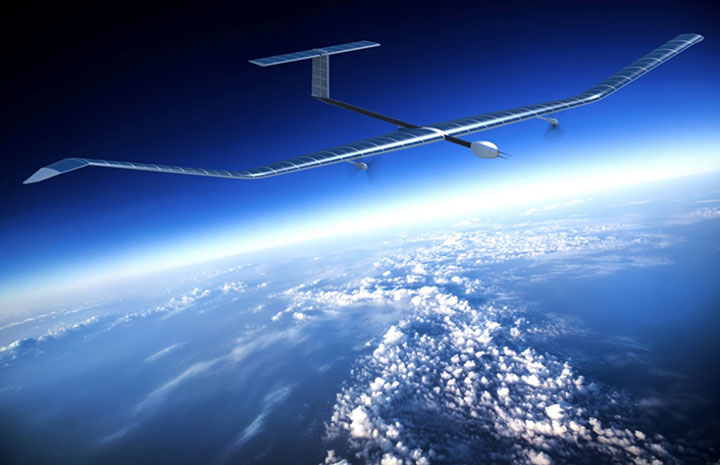
ALEXANDRIA, Va. — Commercial satellite companies have become the driving force behind a global space economy that’s expected to reach $737 billion within the decade. As the industry shifts from niche applications for small markets to becoming a more integrated player across verticals, investors and industry leaders are eager to understand what opportunities are real and what’s not yet ready for primetime.
“As we see everything converging, it’s important to bring both sides together so you can get a real picture of where we stand today, what are the challenges today and what is the realistic rollout that we see,” said Nathan de Ruiter, Managing Director of Euroconsult Canada.
The path forward for direct-to-device (D2D), autonomous vehicles, artificial intelligence and satellite 5G looks promising. But like anything in its infancy, these applications demand attention to accurately assess their potential for sustained growth.
Big D2D Energy
Few opportunities have driven more attention than connecting consumer smartphones directly to a satellite constellation. While some analysts have estimated the D2D market could hit anywhere from $25 billion to more than $100 billion by the next decade, there is lingering uncertainty around the business models, regulatory environment, interference, constellation sizes and more.
“It’s a big opportunity. But then the big question is how do you monetize and how quickly can you scale that?” de Ruiter noted.
For example, the free emergency SOS service for iPhone users through the Apple-Globalstar partnership has been an important demonstration of capabilities, but it will not necessarily drive revenue, according to Euroconsult. “The holy grail is broadband service,” de Ruiter emphasized. The more data and broadband applications an operator can support, the larger the market for those services becomes.
Companies are testing different approaches with no clear winners yet. Operators, including Lynk Global and SpaceX, have brokered deals with MNOs to share cellular bandwidth. Others, like Iridium and Globalstar, are using MSS frequencies. AST Spacemobile and Omnispace solutions are designed to 5G NTN standards. For the first time, WSBW will address the various approaches and the broader market prospects in a panel featuring Iridium, Omnispace, Lynk Global and AST Spacemobile.
AI Boom for Space?
Like so many other industries, the space sector is grappling with the consequences of artificial intelligence. “It’s going to be a key topic of discussion,” de Ruiter said. “That will definitely be interesting to see how the space industry and these different elements can benefit or make use of AI or if there are specific concerns.”
The opportunities are wide open for space companies to leverage AI to accelerate growth and create new use cases. Many industry stakeholders are already begun to embrace AI applications for predictive analytics, satellite mission management, hardware design, autonomous decision-making and more.
At the same time, experts continue to have concerns about AI cybersecurity and data integrity. There are also outstanding questions about the broader market. The massive appetite for AI technology across industries is running up against supply constraints of advanced AI chips with powerful GPUs. Even as chipmakers, like Nvidia, work to meet demand there is speculation about whether the initial surge in demand will be sustained over the long term.
5G and Beyond
Another technology that has started to rekindle interest is high-altitude platform systems or high-altitude pseudo-satellites (HAPS). Several companies flirted with HAPS in the past—most notably Google’s Loon project. Euroconsult says it has seen fresh commercial interest in the technology, which has been promoted as both a low-latency non-terrestrial node for 5G networks and a complement to Earth observation.
“We now sense a resurgence of new players and approaches to the HAPS business model,” de Ruiter explained. These new approaches are “much closer to real commercialization” than the technology demonstrations seen in recent years.
 This file image shows the Airbus Zephyr S, a high-altitude pseudo satellite (HAPS) that flew for more than 25 days on its maiden flight in 2018. HAPS are not a new technology but appear to be closer to commercial viability. (Source: Airbus)
This file image shows the Airbus Zephyr S, a high-altitude pseudo satellite (HAPS) that flew for more than 25 days on its maiden flight in 2018. HAPS are not a new technology but appear to be closer to commercial viability. (Source: Airbus)
Satellite use cases within the autonomous vehicle market have also driven significant cross-industry interest and investment by leading automakers, including BMW and Volkswagen. Although the timelines and progress toward different levels of autonomy vary, a recent McKinsey report estimated the total potential revenue from autonomous driving could reach $300 billion or more by 2035. Satellite’s role in this market is often viewed as the only viable option for fast, low-latency connectivity outside mobile coverage areas.
Across the board, the convergence of space and terrestrial technologies in the 5G ecosystem continues to be a driving issue for the satellite industry and a requirement for opening the satellite market. Just as 5G covers multiple applications and areas of interest for satellite operators and vendors, so too will artificial intelligence.
New Faces, New Ideas
Investors have poured more than $280 billion into the space economy over the last decade, hitting a single-year record of $47.4 billion in 2021. This trend has propelled a wave of young space entrepreneurs, many of whose ventures have continued to be successful, despite recent economic headwinds.
As a result of that investment climate and companies proving the value of their innovations, the face of the industry has started to change. There is more diverse international as well as a growing list of leaders under 40 years old and even under 30.
Those changes are reflected at WSBW, de Ruiter noted. “You see a much more diverse set of companies. [The conference] also brings a much younger audience,” he said. “We’re definitely attracting a different profile of people, which is good because it sparks different kinds of discussions.”
Explore More:
Podcast: Satellite Networks, Mobile Operators and Cell Service from Space
How Satellite Became a Part of 5G
Podcast: HAPS – Terrestrial, Satellite and Stratospheric Communications
Satellite Connectivity Providing a ‘Bridge’ to Fully Autonomous Vehicles
Podcast: Artificial Intelligence and Maintaining Cybersecurity in LEO
